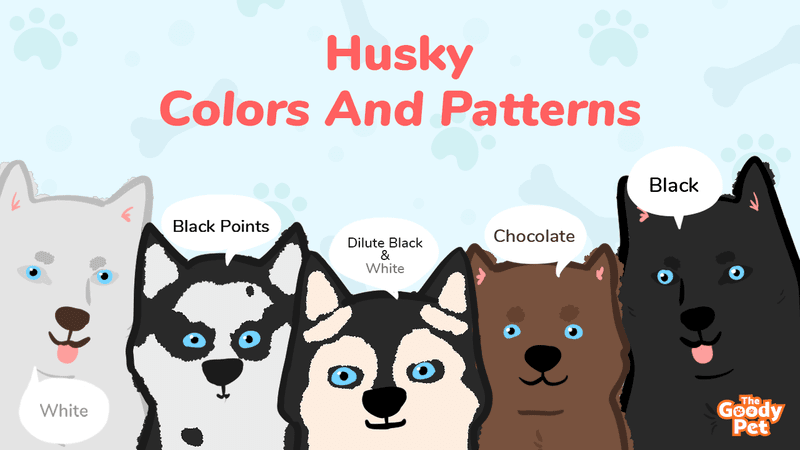Siberian Huskies are arguably among the most beautiful dog breeds out there. Maybe it’s the fact that they have that exotic, wild wolf aesthetic that is so popular these days. It could be the beautiful contrast in their coat color combinations. Whatever it is, it is no wonder that they ranked 15th on American Kennel Club’s list of most popular dogs in 2020.
Siberian Huskies come in a variety of aesthetics with varieties including 2 coat types, 13 colors, 8 patterns, 5 eye colors. This includes common brown eyes or black and white coats as well as rare parti-color eyes and even exotic, white Huskies.
28. Medium Coat
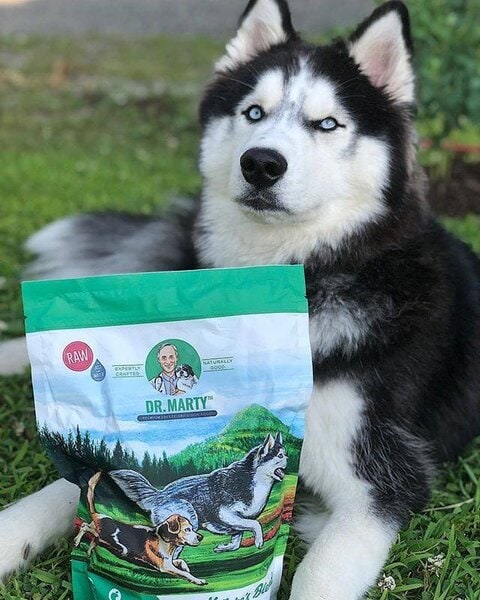
The medium coat Husky is the most common variation of the Siberian Husky breed. The double coated pooch has a soft bottom layer and a smooth and longer top layer. Both of these lay close to the skin and form a dense coat which is exactly what Siberian Huskies historically required to survive harsh winters.
This type tends to have longer fur between the toes and around the neck and the shortest fur over the face.
27. Wooly Coat
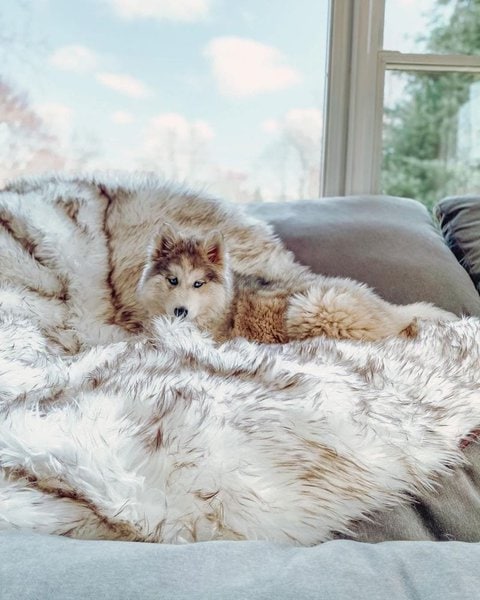
Wooly coat Huskies have a double coat with a longer and coarser outer layer. In some cases, the top coat fur may also be waving. The degree of waviness, coarseness, and length of fur varies from one doggy to another. However, the result is a super fluffy Husky.
Ironically, this does not always make them warmer than Huskies with medium coats. This is because their coats tend to hold on to cold air and moisture due to the way the fur stands in relation to the skin.
26. Black
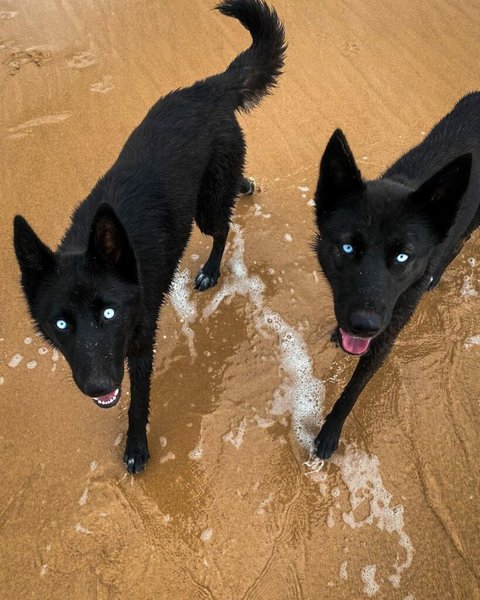
Now for the colors.
The all-Black one is one of the most beautiful coat color variations of the Siberian Husky breed. They are characterized by all black coats or at the very least combinations where black makes up more than 75%. This exotic aesthetic is taken to the next level with Black Huskies that have blue eyes for a truly gorgeous pooch.
Unfortunately, these beauties are among the rarest variety among Huskies. This is because the genes required to produce the trait are themselves incredibly rare and recessive.
25. Black Tan & White
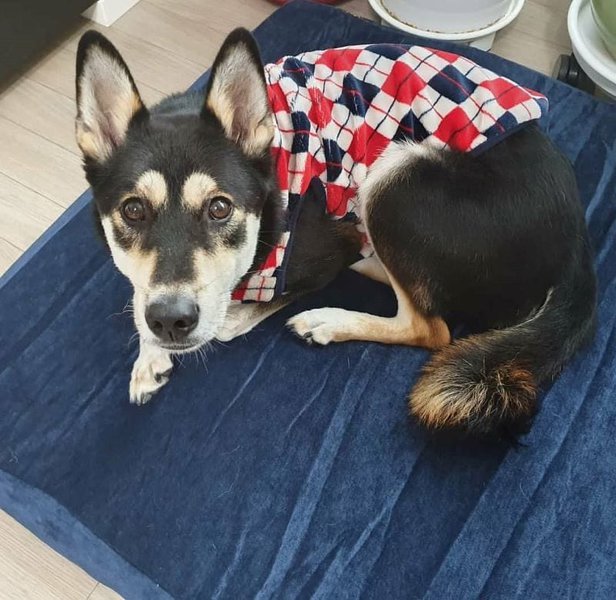
It is not very common to find tricolor Huskies with most having bicolor combinations. This is what makes the Black, Tan, and White Husky such a special dog.
The doggy will have the black as the main coat color with white and tan markings all over the body. More often than not, you may also notice the iconic white mask where the face has white fur from the eyebrows to the level of the lower jaw.
24. White
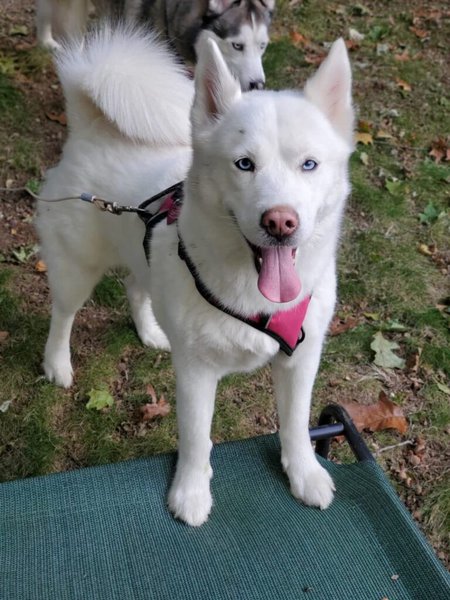
The all-White Husky goes against the norm of bicolor pairings with their single, solid color coat. These dogs are very similar in appearance to other white spitz-type pooches including the Samoyed and White Alaskan Malamutes. This trait may either be as a result of specific color genes or albinism.
The genes responsible for this rare trait are also associated with blue eyes which perfectly complement the snow white coat for a truly unique Husky.
23. Chocolate
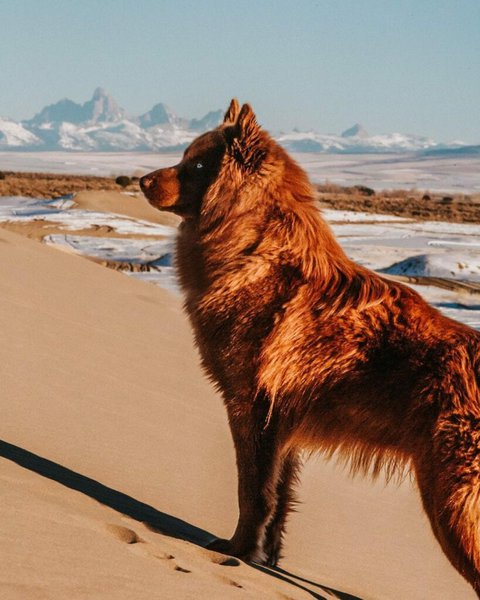
As the name suggests, Chocolate Huskies have dark, rich brown coats that make them look like they were dipped in actual chocolate. In some cases, the Husky may have white markings especially on the neck and chest area. However, most tend to have beautiful, all brown coats and brown eyes to match.
Another distinguishing feature about these doggies is the fact that they are often larger than typical Huskies and fall within the higher ends of the 35 to 60 lbs and 19 to 24 inches ranges.
22. Jet Black & White
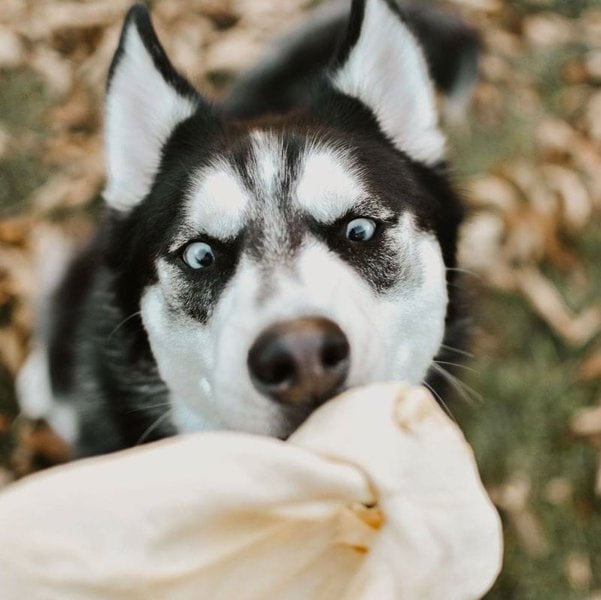
While most Huskies actually have bicolor coats, the Jet Black and White variety stand out as the type with the most solid contrast. This is because the areas of the coat that are black have a solid, jet black shade while those that are white are all white with absolutely no impurities.
This creates incredible contrast at the points of demarcation between the main coat color and the markings.
21. Dilute Black & White
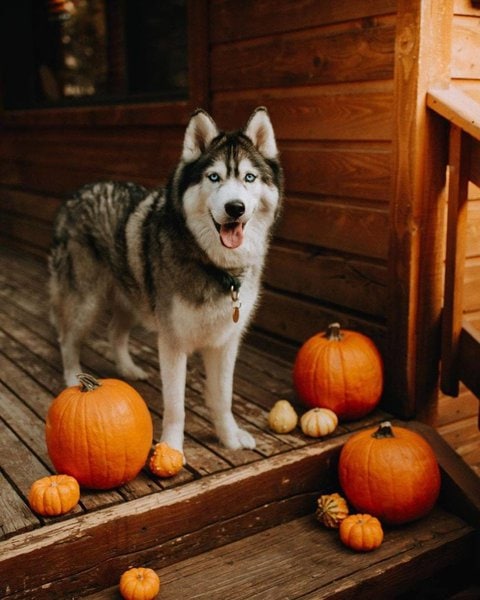
The Dilute Black and White coat is one of the most commonly found combinations within the Husky breed. As the name suggests, it has black and white as the color pairing. However, they differ largely from the Jet Black and White variety in that these doggies have a diluted version of black.
The trait gives the affected black part of the coat a lighter and powdery shade of black for a snowed on look.
20. Gray & White
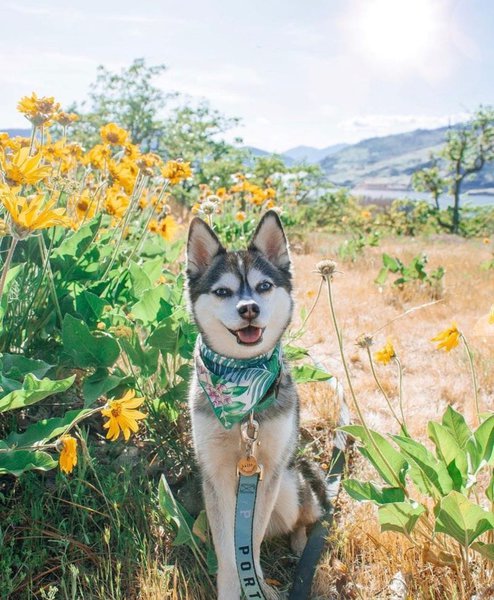
It is a very common mistake for people to confuse the Dilute Black and White Husky for the Gray and White Husky variation. This is because of the powdery look that both of the darker colors may have. In this case, the gray part is actually a solid color despite appearing so light and powdery.
The shade of gray also varies from one Husky to another ranging from dark gray to shades so light that you may have a hard time telling the white markings apart from the gray parts.
19. Silver & White
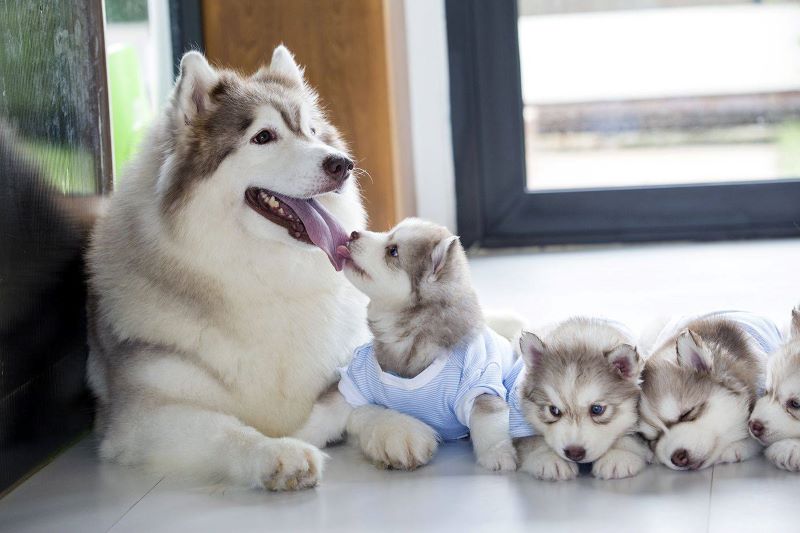
Yes, there is such a thing as the Silver and White Husky. And no, it is not the same thing as a Gray and White variation.
The genes responsible for the two coat types are actually different which in turn makes the two purebred Huskies separate variations despite looking so similar. One of the best ways to tell them apart is through the shinier and light shade of gray present in the Silver and White Husky that gives the dog a metallic aesthetic.
18. Brown & White
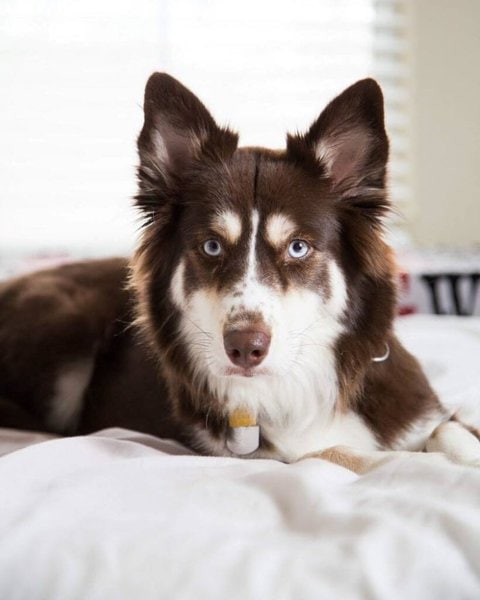
The Brown and White Husky features the classic bicolor distribution of markings including the facial markings. They usually feature blue eyes which work really well with this beautiful pairing.
The Brown and White Husky is often confused for the Red and White variation. However, the brown type has a darker and richer shade of brown. They also have more distinguished margins between the brown colored sections and the white markings.
17. Red & White
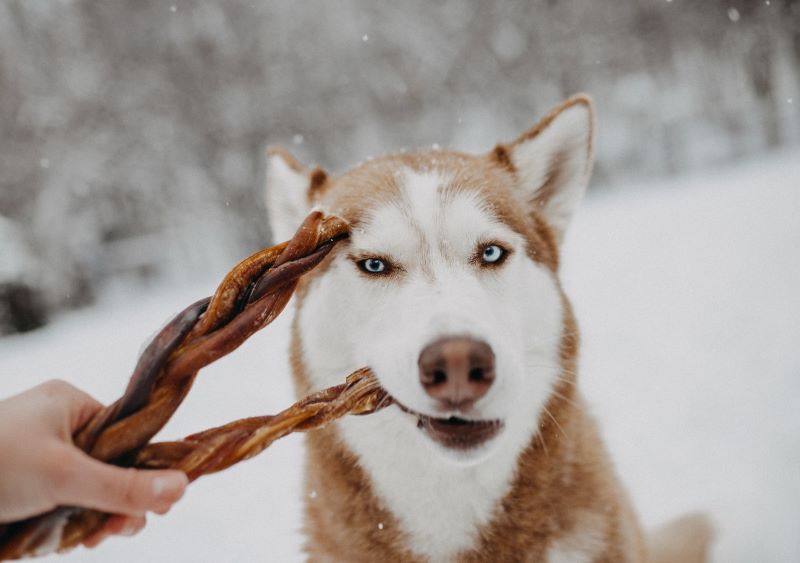
The red parts of the Red and White Husky vary widely. They could be darker tones that appear rusty and almost copper-like. They could also be closer to orangish hues. These lighter colors are the best to use when distinguishing the variation from the very similar Brown and White type.
Another interesting thing about these dogs is the fact that they have pinkish noses and lack distinct markings around the eyes.
16. Isabella White (Orange & White)
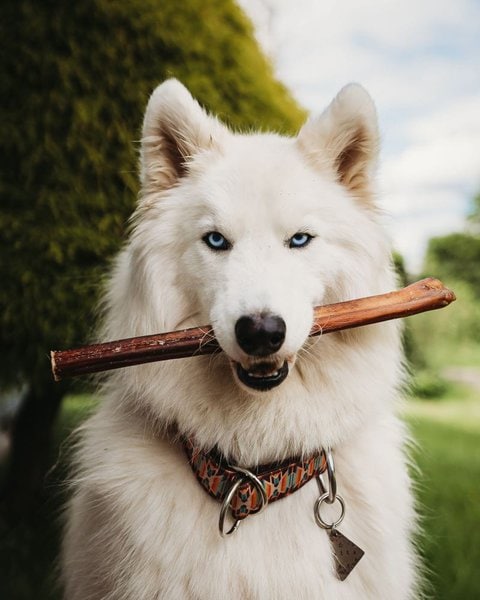
At first glance, the Isabella Husky could easily be mistaken for a dull white Husky. However, their coats tend to be more like cream and light orange. They may also have this in combination with white markings that are not always easy to distinguish.
Isabella Huskies get their unique coloring from genes that cause watering down of the red and brown pigments. This also results in the Husky having a pinkish nose.
15. Wolf Grey
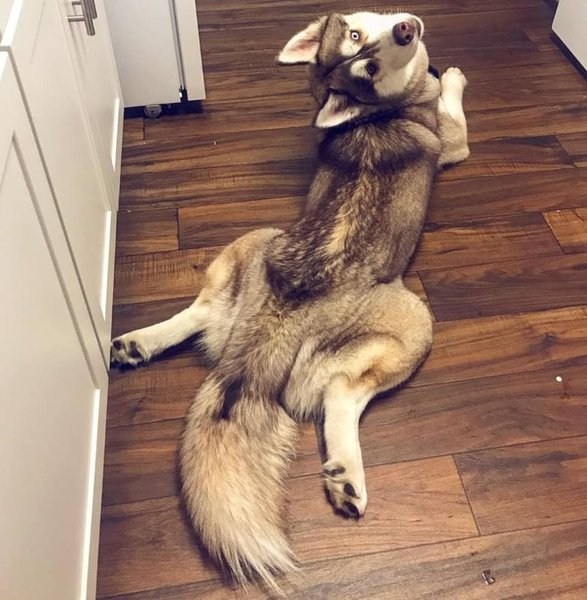
Huskies already look like wolves with their beautiful, wild aesthetic. The Wolf Grey Husky takes this look to the next level with this coat that basically makes them look like their wild relatives.
The appearance of the Wolf Grey coat is very difficult to describe as it comes in different shades, combinations, and intensities. However, there must be an area of white somewhere with the face being one of the most important of these locations for the dog to qualify as a Wolf Grey Husky.
14. Agouti
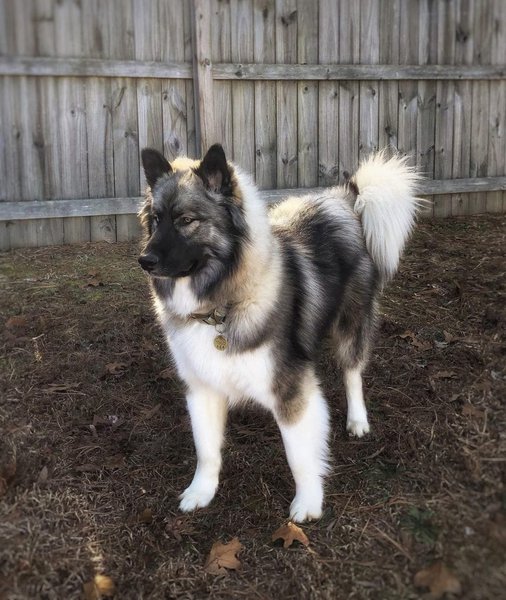
Agouti Huskies actually are very similar to the Wolf Grey variety in terms of general aesthetics. However, they tend to be darker and have less areas covered with white markings.
Furthermore, the white spots Agouti Huskies have more of a cream hue than the classic brilliant white seen with most Huskies.
One of the most distinguishing features of an Agouti Husky is that their faces must not have white. All these features are as a result of expression of the Agouti gene.
13. Splash Pattern
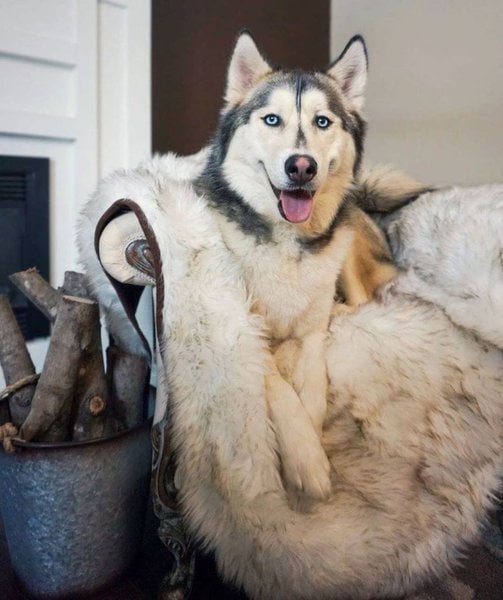
Now for the patterns.
The splash coat pattern is the most commonly found in Huskies especially those with bicolor combinations. Contrary to popular beliefs, the splash description is not actually interchangeable with the piebald as we shall look into shortly.
With splash markings, there may be white sections but these rarely exceed 50% with most of the coat consisting of pigmented sections. The good thing about this pattern is that the genes responsible are not implicated in health issues.
12. Black Points
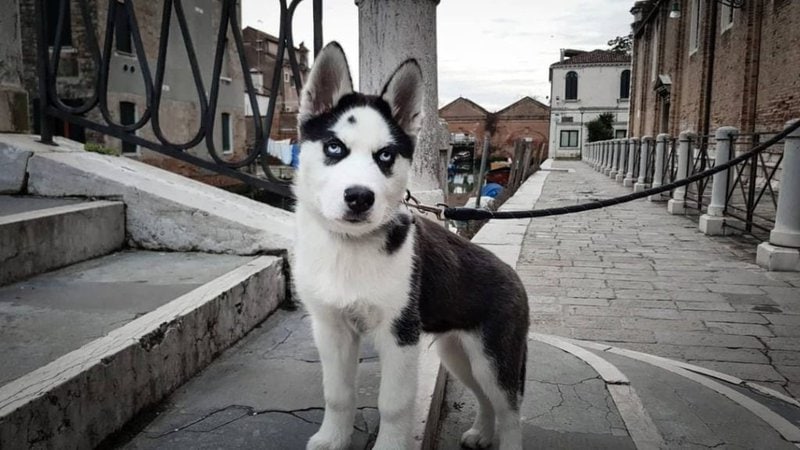
Huskies with black point markings are very rare. More often than not, the markings occur in dogs with black and white coats.
The black points pattern in Huskies is pretty straightforward and features black spots on different parts of the dog’s body. The most common sites are around the eyes which gives the Husky a sort of panda-like look.
They may also have black spots on the nose, elsewhere on the face, and even on the paws.
11. Piebald (Pinto)
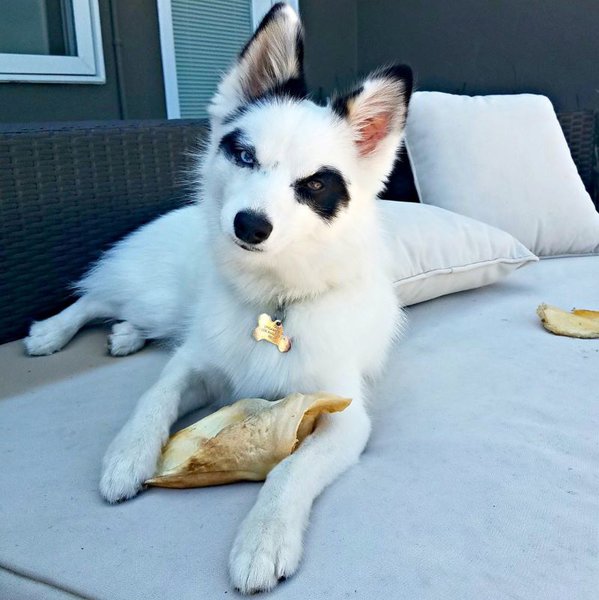
Unlike the splash pattern, Piebald Huskies have an excess of white markings. In fact the parts of the coat that are white exceed 50% with the second color appearing more like additional markings than a proper part of the combination.
They are best described as being very similar to cows with a mainly white coat and spots of secondary colors littered randomly all over the coat. The spots vary in size from large patches to tiny spots.
10. Saddleback
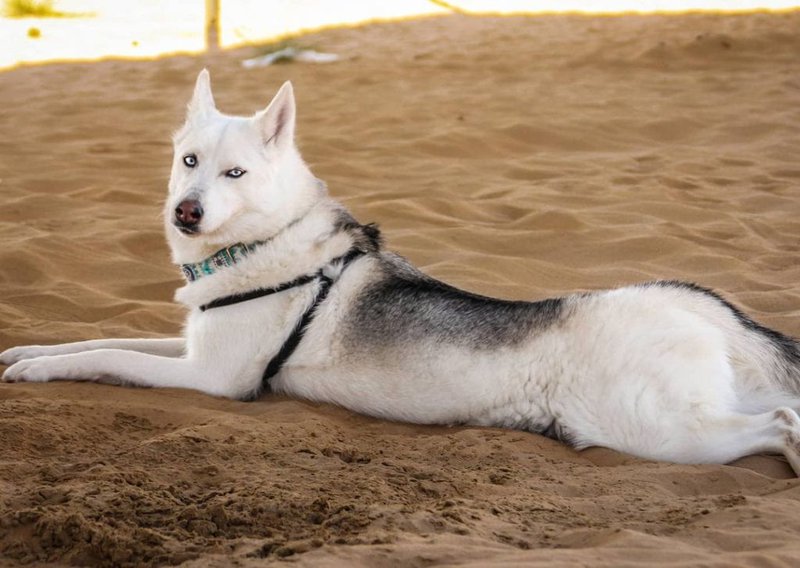
The Saddleback is a very subtle pattern but one that is very common among Huskies. The idea behind this is that the Husky has a patch of pigmented fur on the back with most of the rest of the body having white fur.
This makes the doggy look like they have a saddle constantly attached to them. The pattern is mainly seen with bicolor Huskies with the darker color forming the saddle.
9. Sable
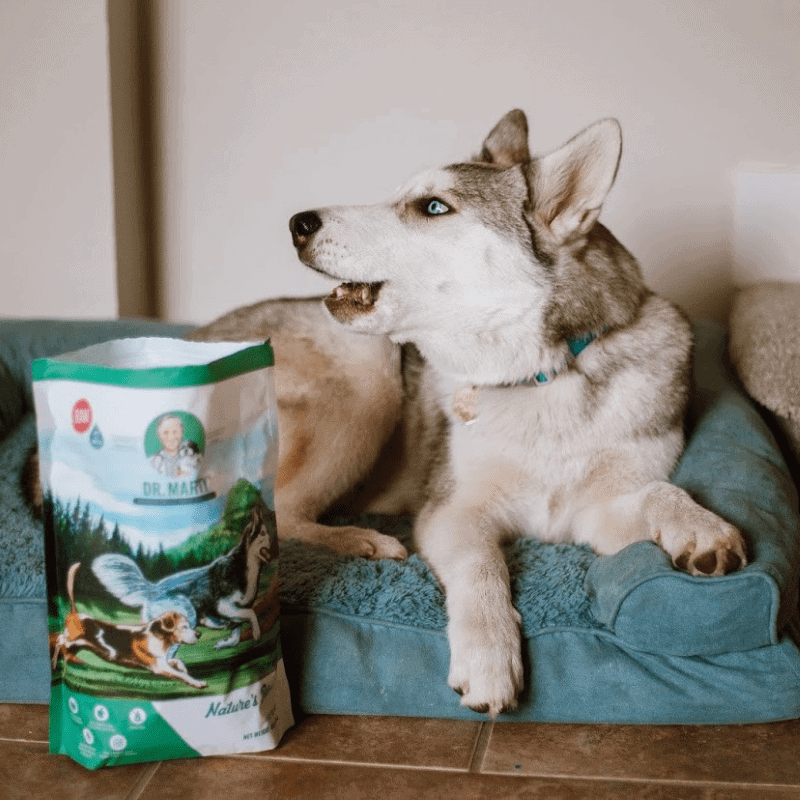
Sable Huskies can be very confusing when it comes to their description. From a distance, bicolor pooches may appear tricolor. This is because the tips of the fur contain black pigmentation.
The Sable coat pattern of a Siberian Husky is best appreciated in bicolor huskies where the darker color is something lighter than black. This could be brown, red, gray, silver, or even orange.
Furthermore, they are known for having dark noses and distinct, classic Husky markings around the face.
8. Brindle
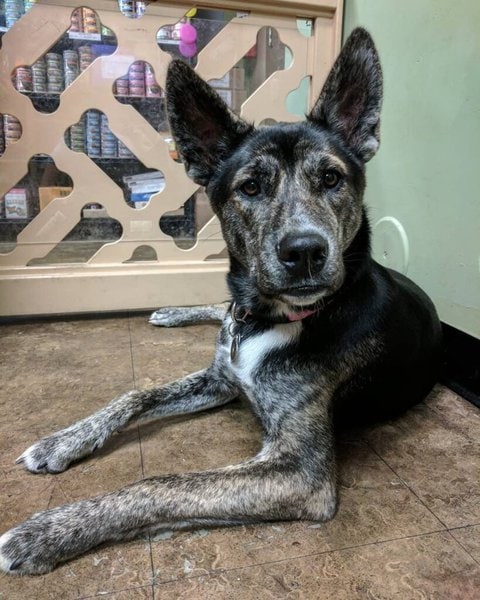
Brindle pattern Huskies get their markings from a specific gene that causes stripes of darker colors to appear on lighter colored coats. The Husky rarely has other markings including the classic facial patterns that the breed is known for.
Despite having dominant gene inheritance patterns, Brindle Huskies are very rare. When it does occur, the dog will most likely end up having a tricolor pattern with black, white, and another color like tan, brown, or gray.
7. Merle
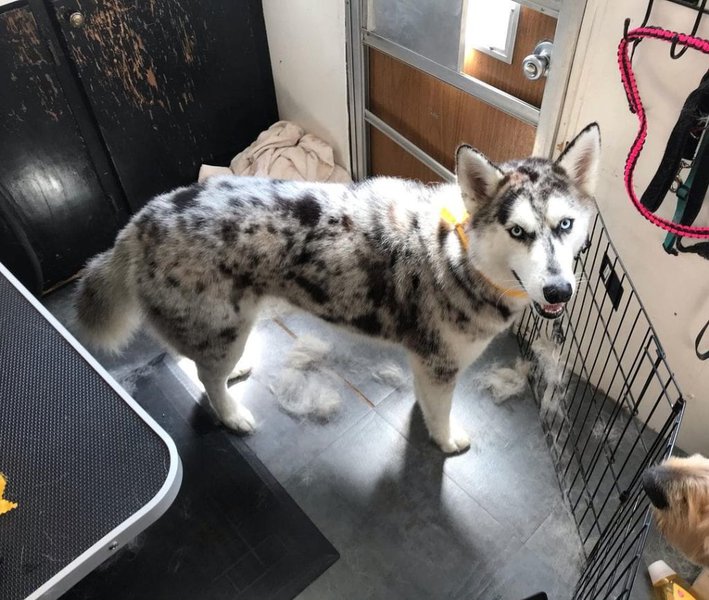
Merle Huskies stand out with their pigmented spots. The spots are of a dark color like black or brown and appear on a usually white main coat. They commonly have blue eyes but may also have the rarer blue and brown bi-eyed variation.
This aesthetic is as a result of the Merle gene. Unfortunately, the gene is also associated with health issues including vision and hearing impairment. This is made worse in double Merle inheritance where the puppies are bred from two Merle Huskies.
6. Full Body
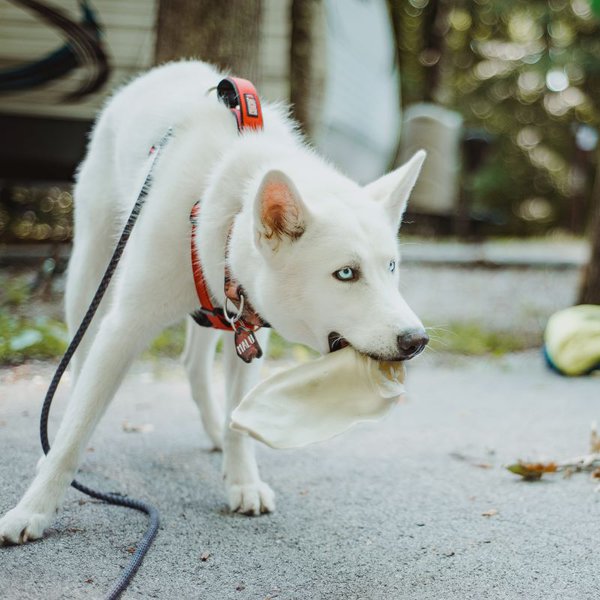
This full body pattern is not technically a pattern as the whole body of the dog is just one color. The most common types here are the Chocolate, Black, and White Huskies. These have their entire bodies covered with monochromatic fur.
However, there are times where tiny spots of white fur may appear in very small patches on the neck or chest especially with the Chocolate and Black Huskies. Unfortunately, these dogs are very rare as the genes responsible are recessive in the Husky breed.
5. Green Eyes
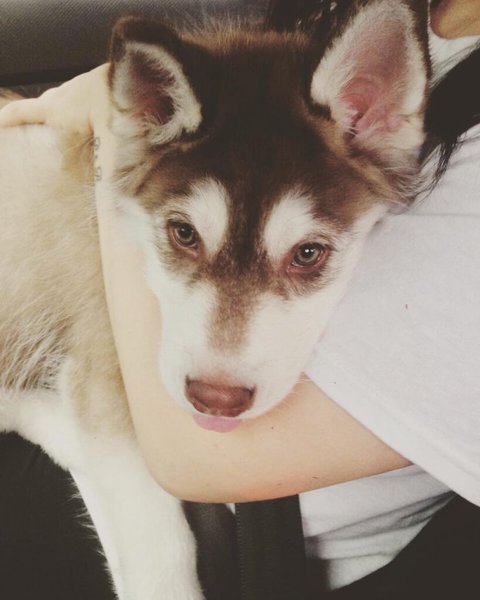
Green eyes are generally very rare in the world of dogs. However, they are quite common among Huskies and are one of the most desirable variations.
The eyes are usually a brilliant, plant green. This works really well with a number of coat colors especially the dark ones where the contrast does wonders when it comes to enhancing the dog’s aesthetics. It is no wonder that green-eyed Huskies are such a hit.
4. Blue Eyes
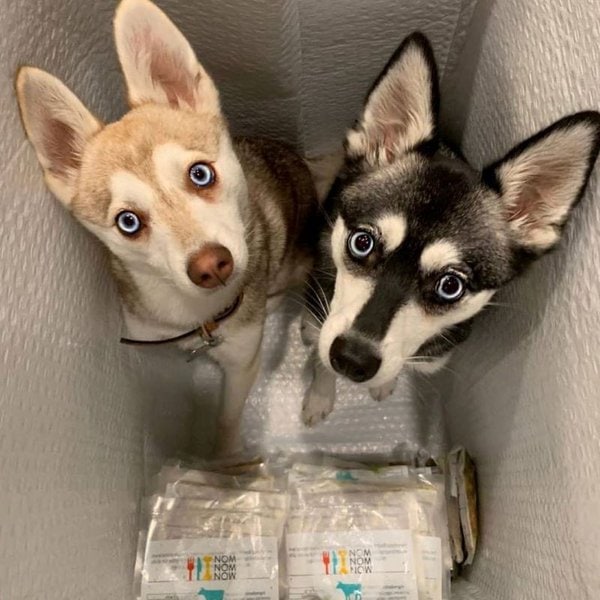
Blue is another color that, though hard to find with other dogs, is quite common with Huskies. The good thing about this eye color in the Siberian Husky breed is the fact that it is not always associated with health problems.
However, if the blue eyes are as a result of issues like albinism or traits like the Merle pattern, you may have various health issues to watch out for, including poor vision, for the dog.
3. Brown Eyes
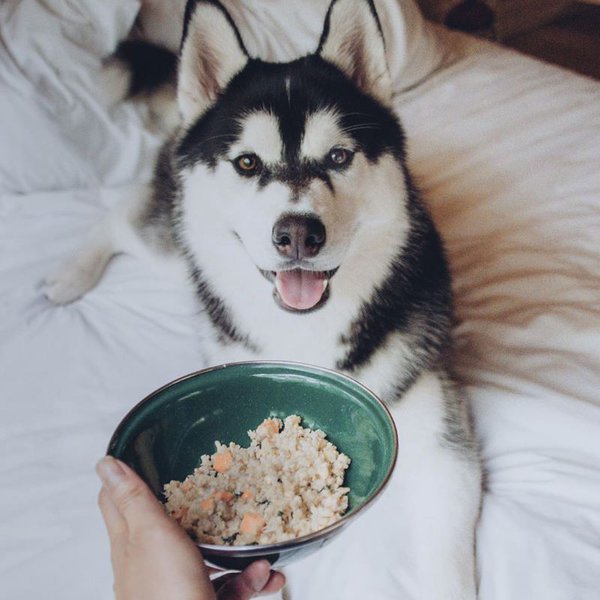
Another very common eye color among purebred Siberian Huskies is brown. This is one of the most eclectic of the options as it comes in very many different shades. These include dark, chocolate hues, earthy brown tones, and even brighter, amber shades of brown eyes.
This eye color is one of those considered a part of the Siberian Husky breed standards by most kennel clubs around the world alongside shades like blue.
2. Parti-Colored Eyes
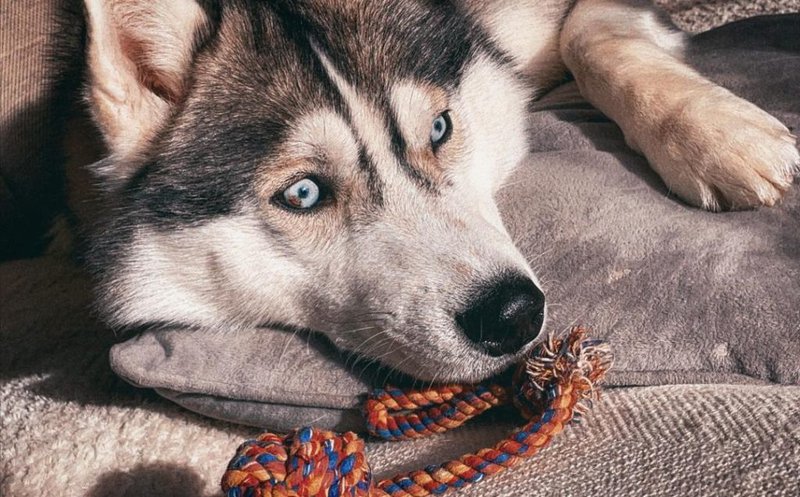
The parti-color is a very interesting variation in Huskies as it contains 2 colors in one eye. This appears as a single color occupying most of the iris and a small patch of the second color on one part of the iris.
This pairing is exclusively seen with a blue and brown pairing. It could be a blue eye with a brown patch somewhere or a brown eye with a blue spot. However, the former is way more common.
1. Bi-Eyed Siberian Huskies
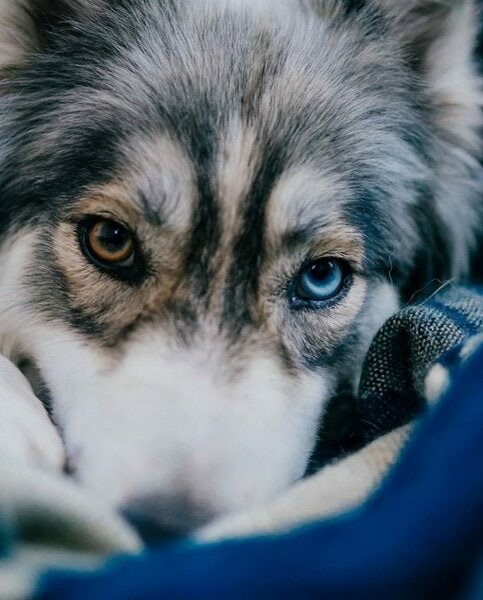
The most unique and arguably most intriguingly beautiful eye color variation in Huskies is the bi-eyed variety. In this case, the dog has one eye that is one, full color and the second eye that is a completely different color.
As with the parti-eyed Husky, this pairing includes brown and blue eye pigments where one eye is fully brown and the other is fully blue. It is a truly mesmerizing aesthetic that works really well with any coat color and pattern.
Related Questions
What Is The Most Popular Husky Color? The Diluted Black and White combination is the most popular among Siberian Huskies. The dark parts range in intensity from dark black to lighter, powdery grayish hues that are hard to distinguish from the white markings. Other popular colors on Huskies are solid black and full white as well as gray and white.
How Can You Tell If A Husky Is Purebred? The best way to tell whether or not your husky is purebred is through gene analysis or DNA testing. This may be pricey but it is the most accurate way to determine your pooch’s lineage. You could also tell using standard features. They are known for their medium-to-large build, thick coat, and spitz-like facial features.
Is A Husky A Wolf? A Husky is not a Wolf despite its uncanny resemblance. Like any other dog breed, the Siberian Husky is only distantly related to wild wolves. However, it is common practice these days in production for Wolf hybrids to use spitz-like domestic breeds like the Husky. This allows maintenance of the wolf-like aesthetic while countering the wildness in temperament.

